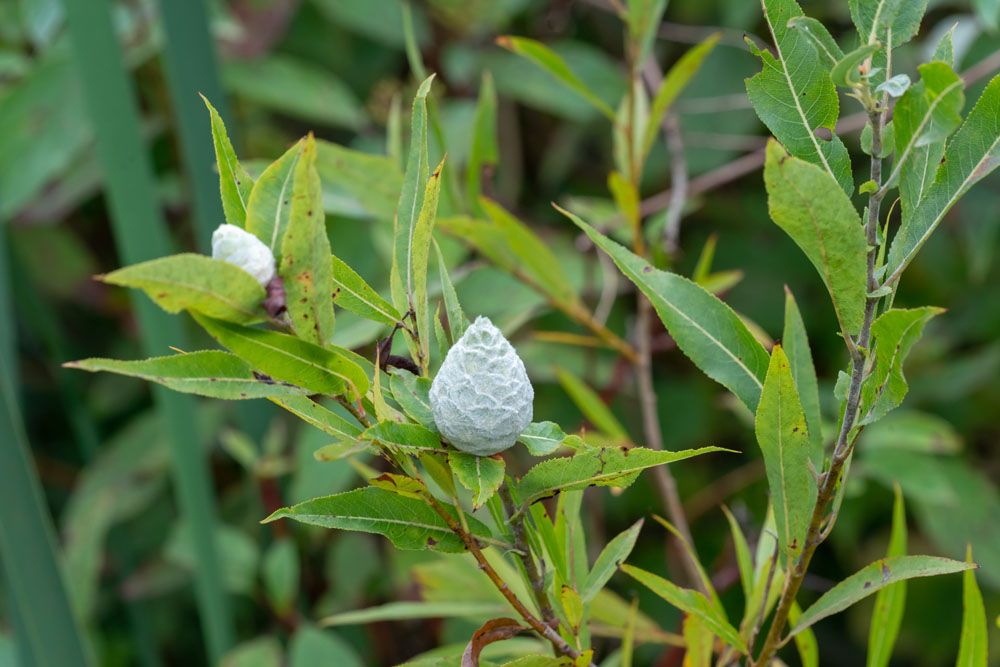
Willow Conegall Midge – Rhabdophaga strobiloides
Willow Conegall Midge (Rhabdophaga strobiloides)
Latin Name: Rhabdophaga strobiloides
Common Name: Willow pinecone gall midge, Willow Conegall Midge
Appearance:
This cone-shaped pine gall grows on willow stems and confuses many people because of its similarity to a pine cone. A tiny insect called a gall gnat midge (Rhabdophaga strobiloides) lays an egg on the stem in the summer.
Hosts plants:
Various native willows
Damage insect caused by Willow pinecone gall midge:
The larvae eat the willow’s terminal growth and prevent the stems from elongating correctly. This results in leaf development that resembles a cone.
Description about Sap Suckers:
Sapsuckers are a kind of woodpecker (Sphyrapicus spp.). Three sapsuckers live in the Pacific Northwest. Sapsucker damage is simple to spot. The holes are drilled (pecked) in horizontal and vertical rows and approximately 25 inches in diameter. The presence of sapsucker damage does not always imply that the tree is infested with insects. Sapsuckers, unlike other woodpeckers, dig for tree sap rather than insects residing in the tree. Sapsuckers eat both hardwood and coniferous trees. They like birch trees with thin bark for foraging. Sapsucker damage is less likely to affect older conifers with thick, ridged bark. The tree will recover if the harm is confined and modest.
Life History and Habits:
In late April or early May, adult midges emerge and lay an egg on the terminal bud as it begins to grow. When the larva feeds on the bud, it stops growing and remains bud-like, but it may still transmit plant nutrients to the tissues. As the tiny fly larva grows within the bud’s cavity, the bud expands. The larva spends the winter in the gall before becoming a pupa in the early spring. Each year, one generation is created.
